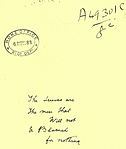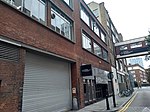Whitechapel

Whitechapel is a district in East London and the future administrative centre of the London Borough of Tower Hamlets. It is a part of the East End of London, 3.4 miles (5.5 km) east of Charing Cross. Part of the historic county of Middlesex, the area formed a civil and ecclesiastical parish after splitting from the ancient parish of Stepney in the 14th century. It became part of the County of London in 1889 and Greater London in 1965. Because the area is close to the London Docklands and east of the City of London, it has been a popular place for immigrants and the working class. The area was the centre of the London Jewish community in the 19th and early 20th centuries. Whitechapel/Spitalfields was the location of the infamous 11 Whitechapel murders (1888–91), some of which were attributed to the mysterious serial killer known as Jack the Ripper. In the latter half of the 20th century, Whitechapel became a significant settlement for the British Bangladeshi community and has the Royal London Hospital and East London Mosque.
Excerpt from the Wikipedia article Whitechapel (License: CC BY-SA 3.0, Authors, Images).Whitechapel
Goulston Street, London Whitechapel
Geographical coordinates (GPS) Address Phone number Website Nearby Places Show on map
Geographical coordinates (GPS)
| Latitude | Longitude |
|---|---|
| N 51.5165 ° | E -0.075 ° |
Address
Happy Days
Goulston Street 44/46
E1 7TP London, Whitechapel
England, United Kingdom
Open on Google Maps









